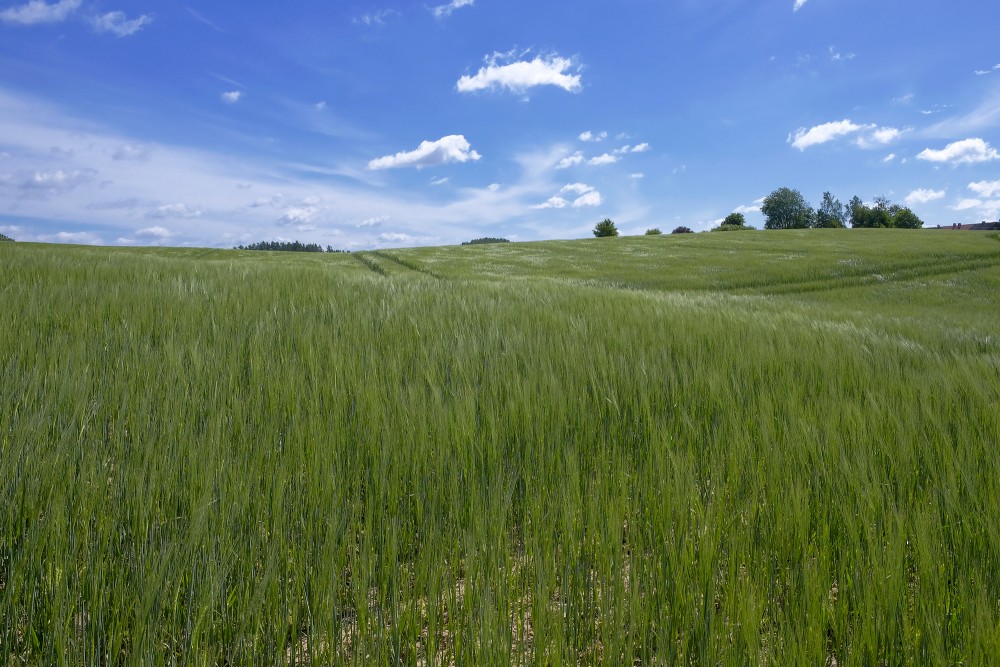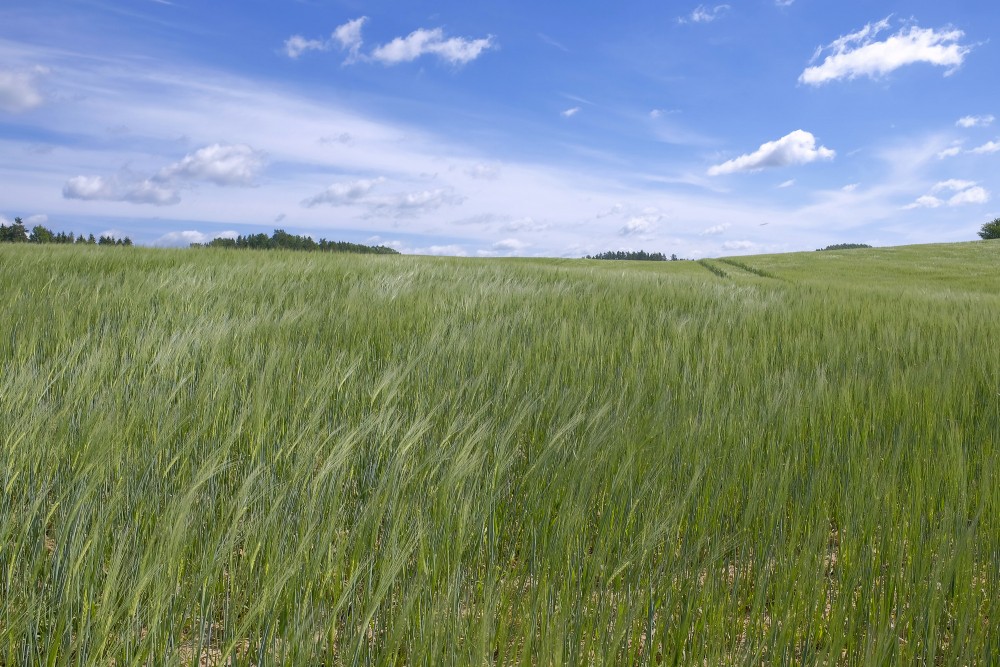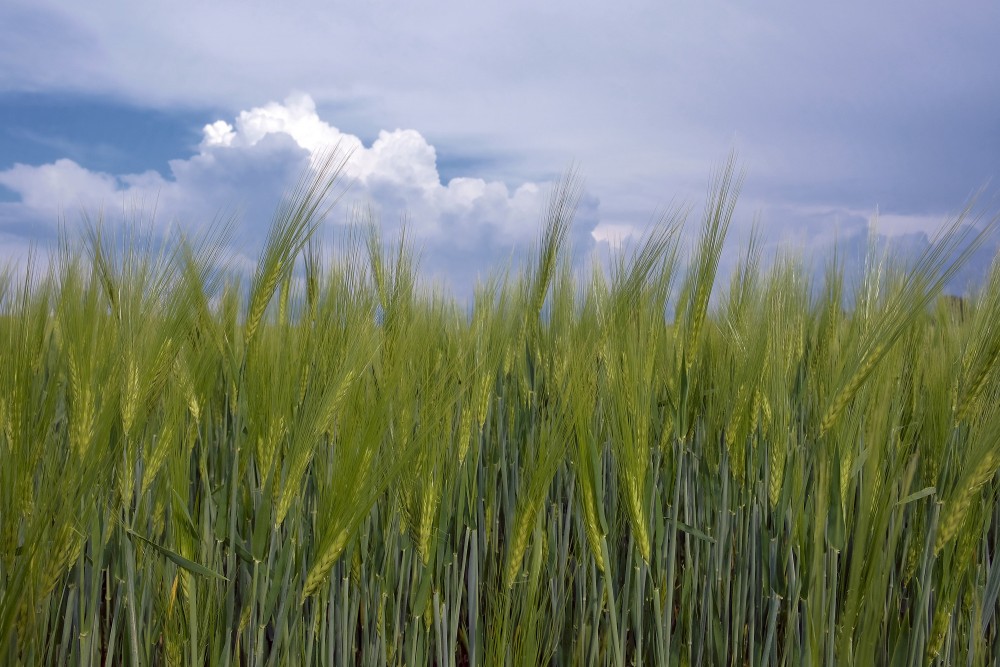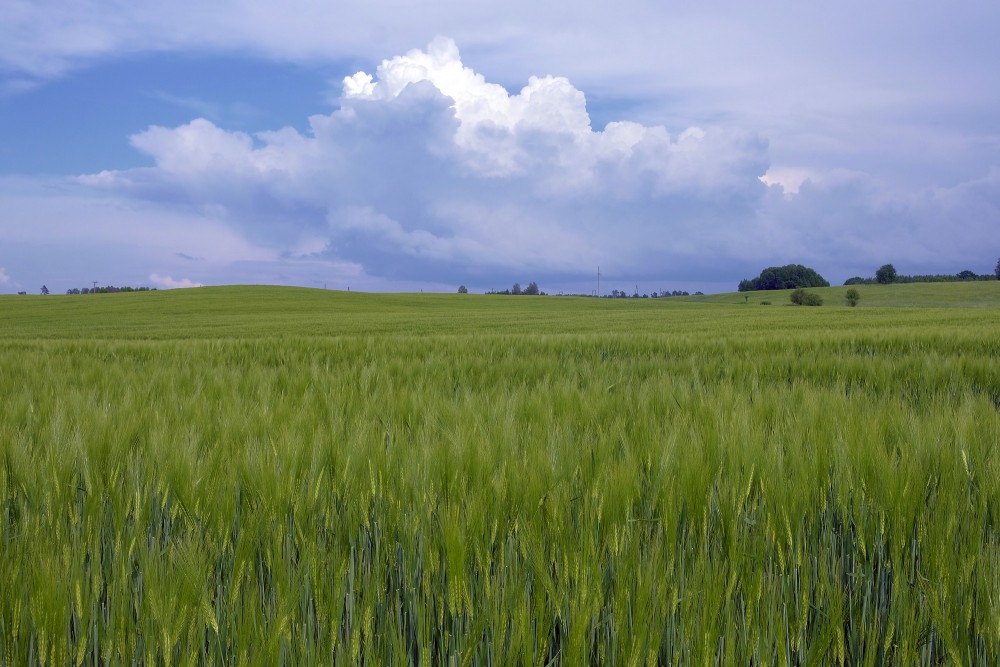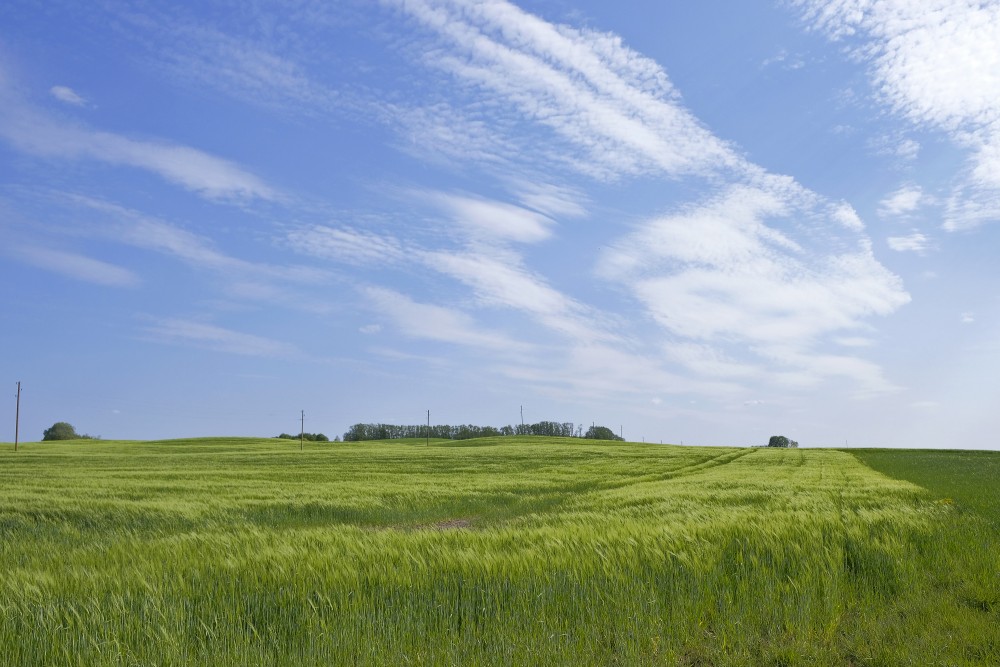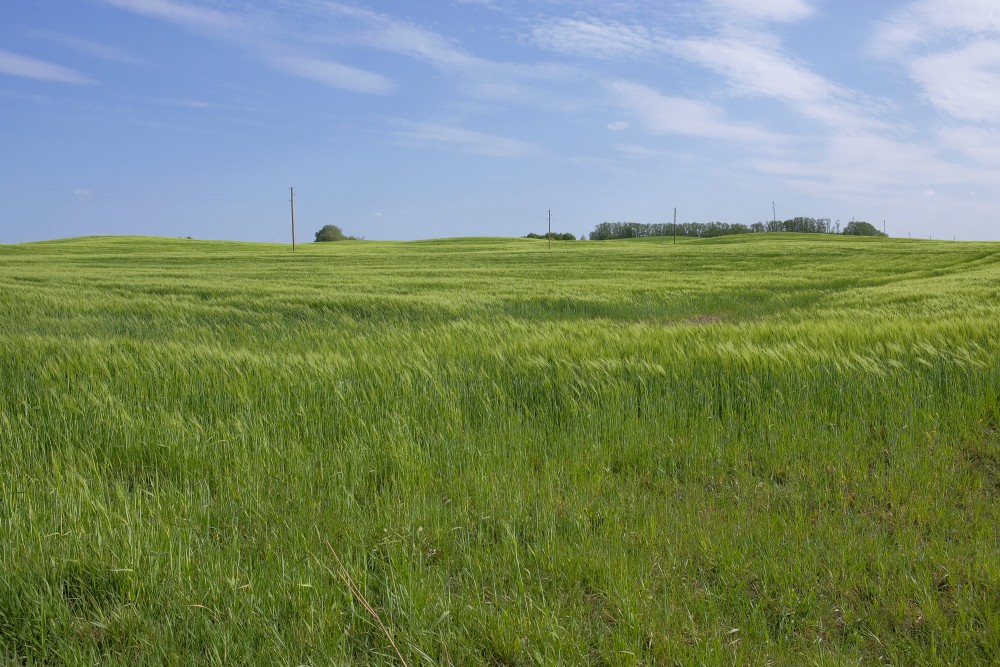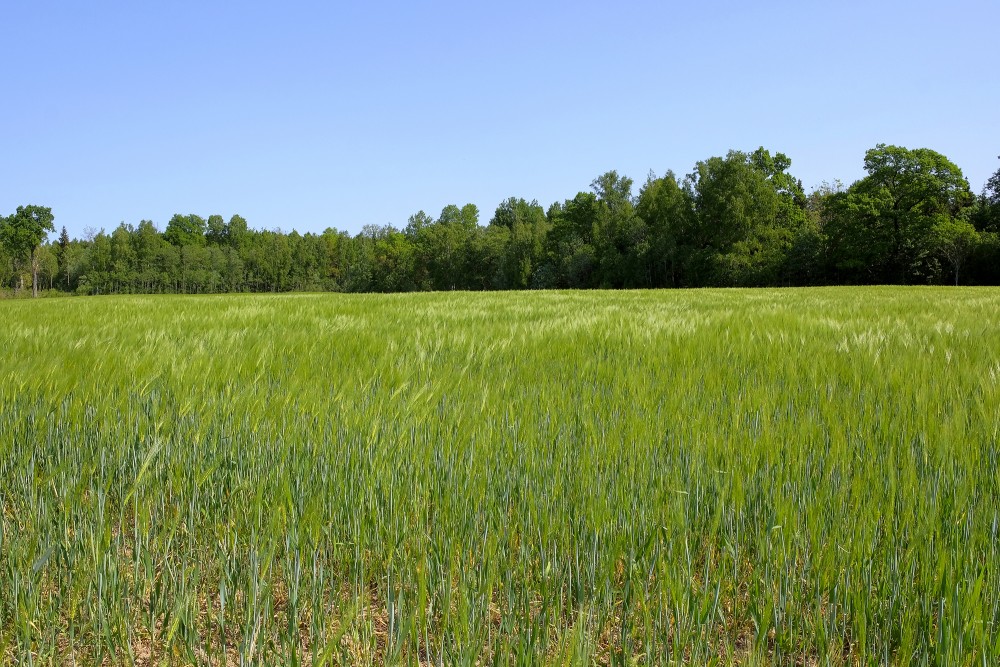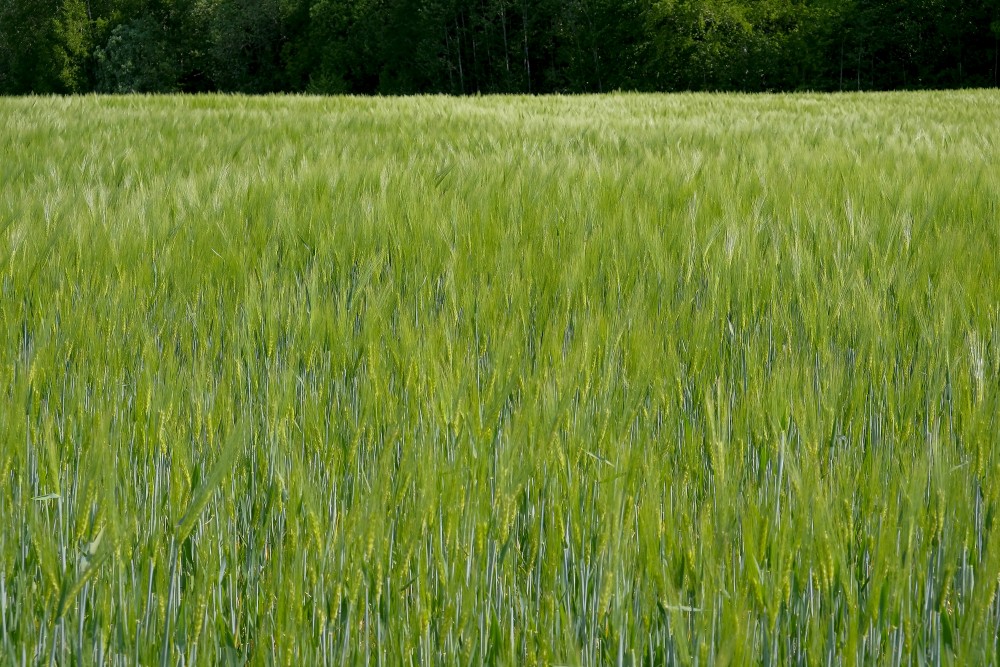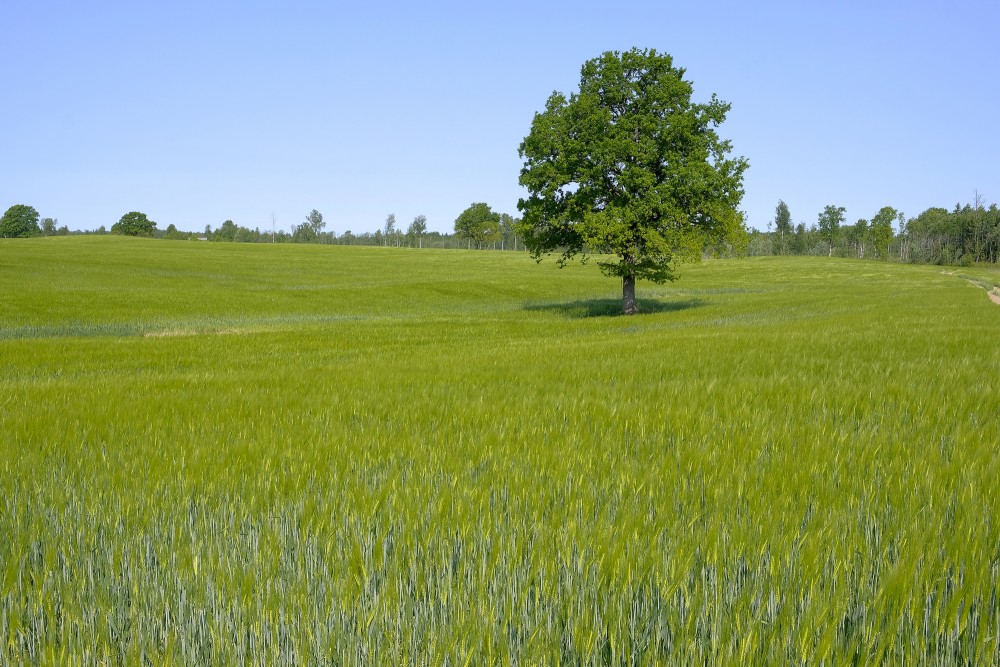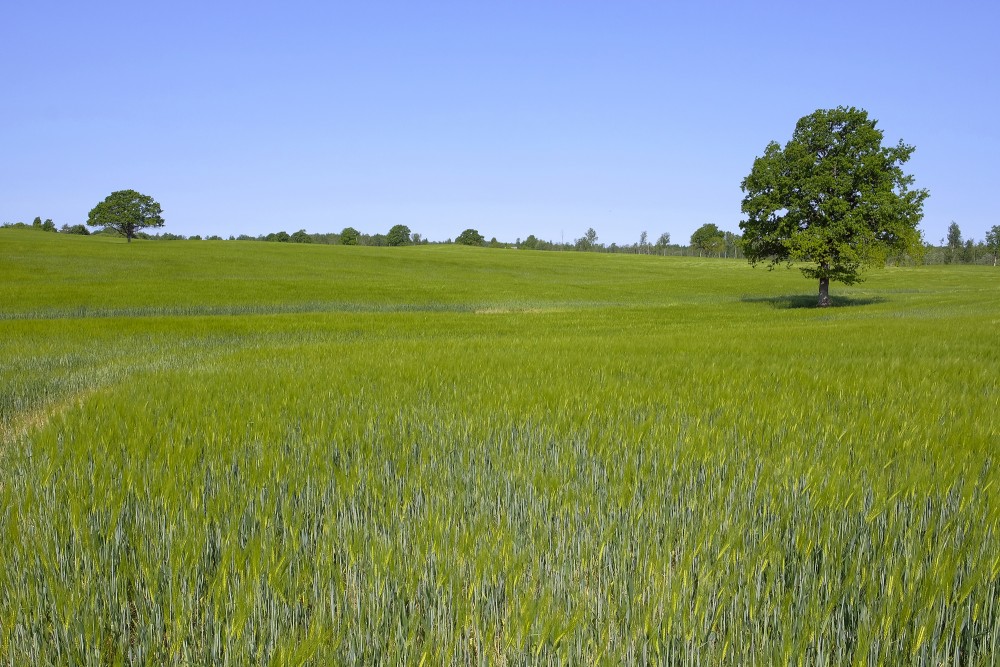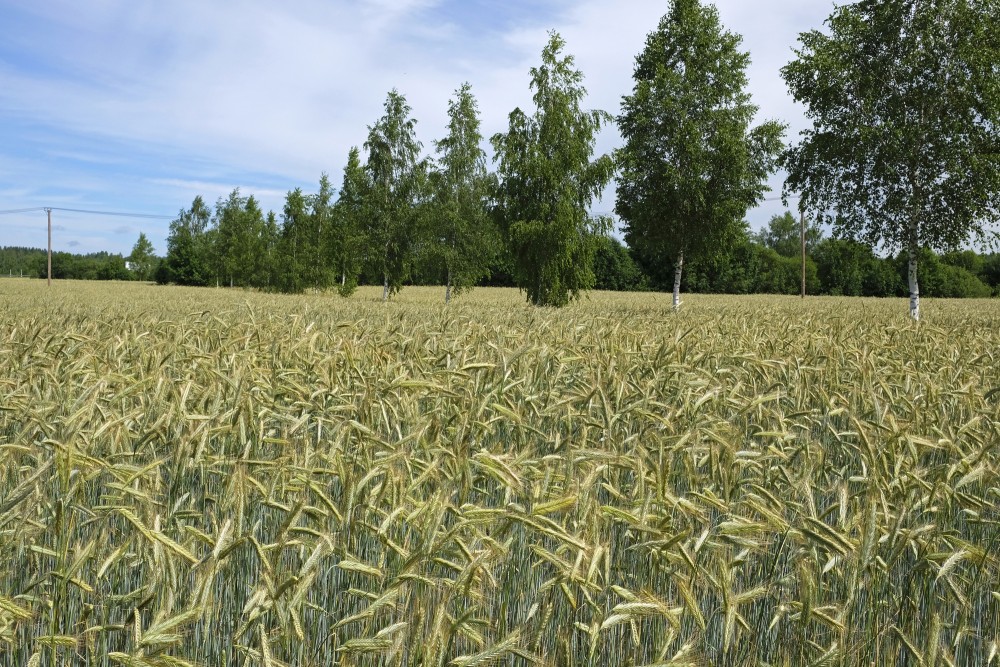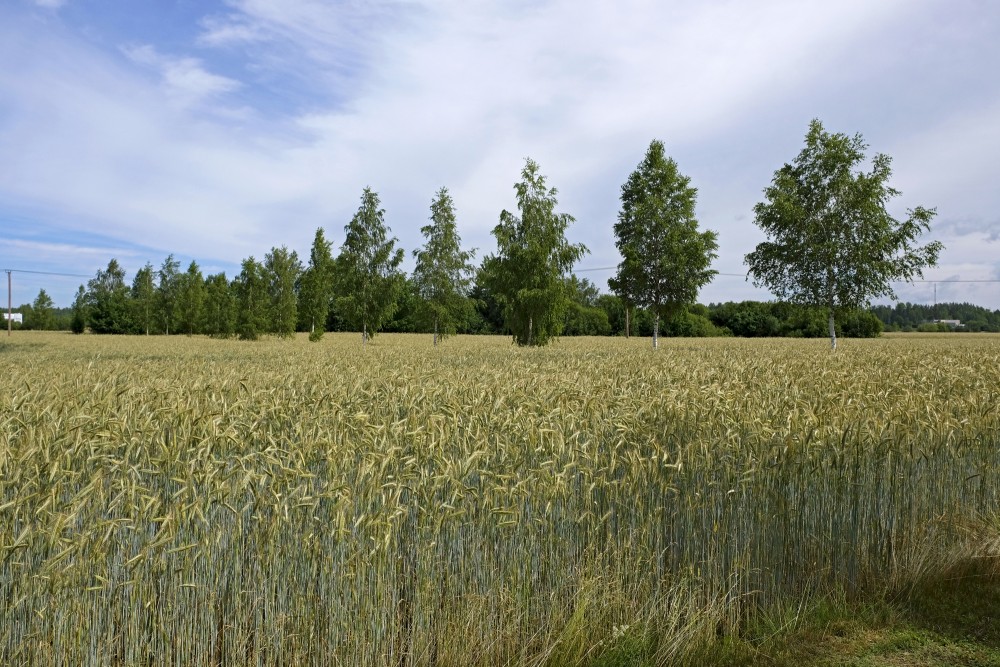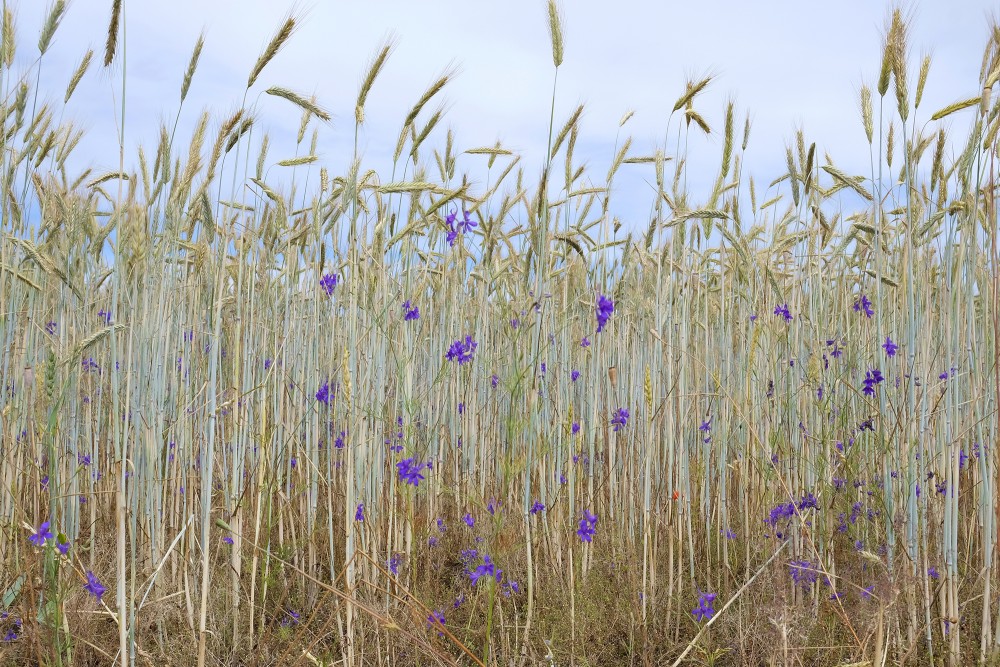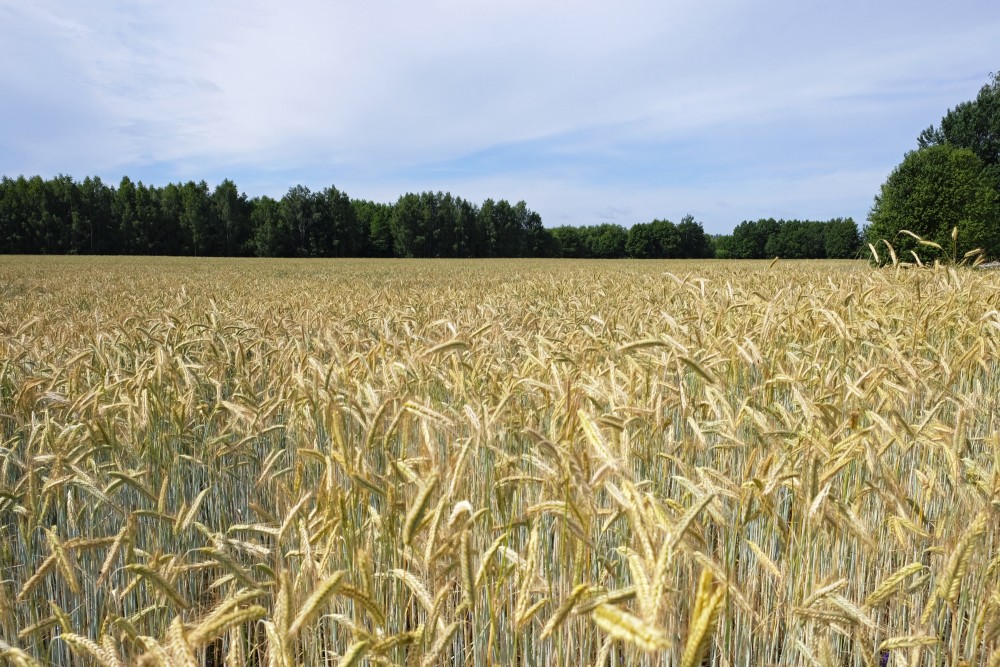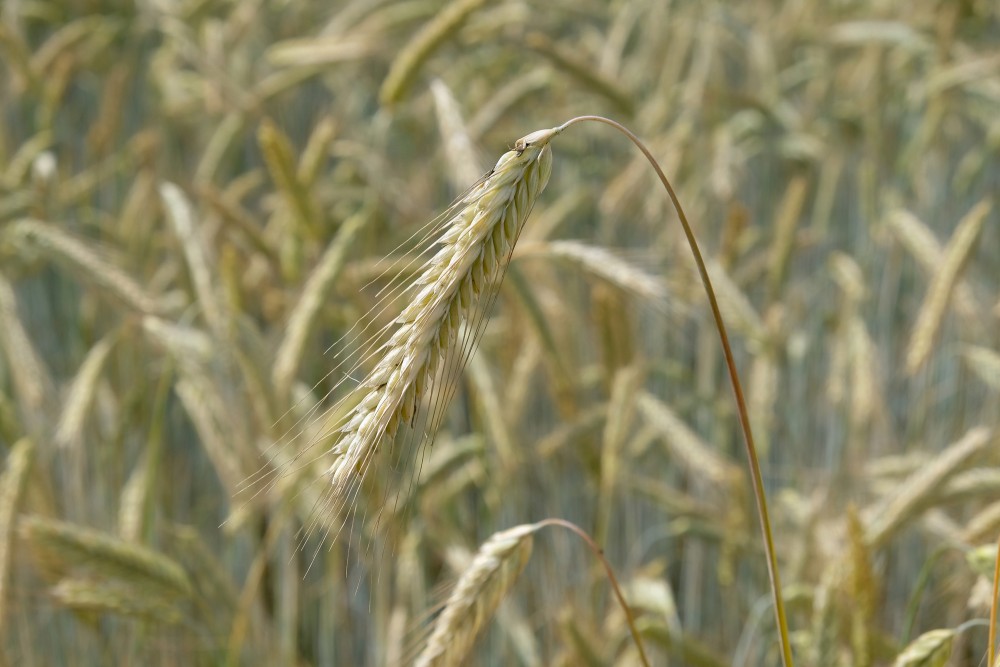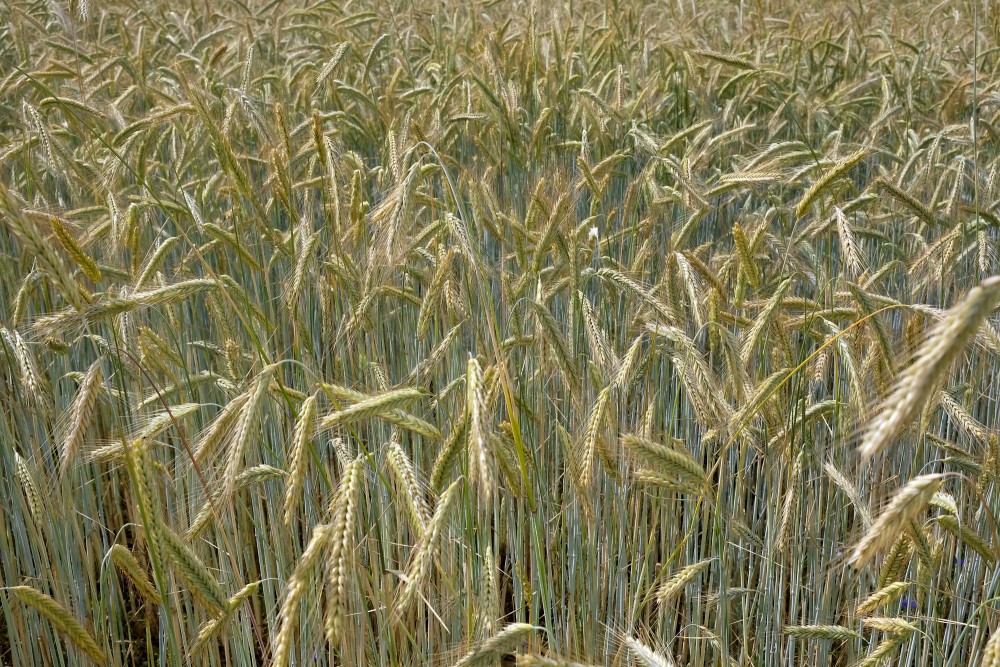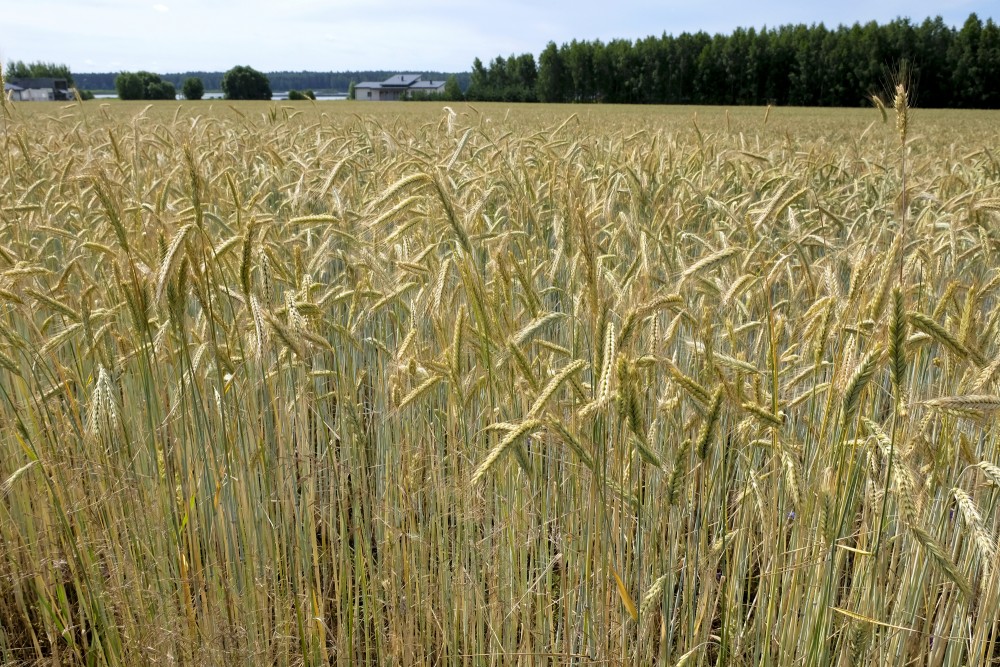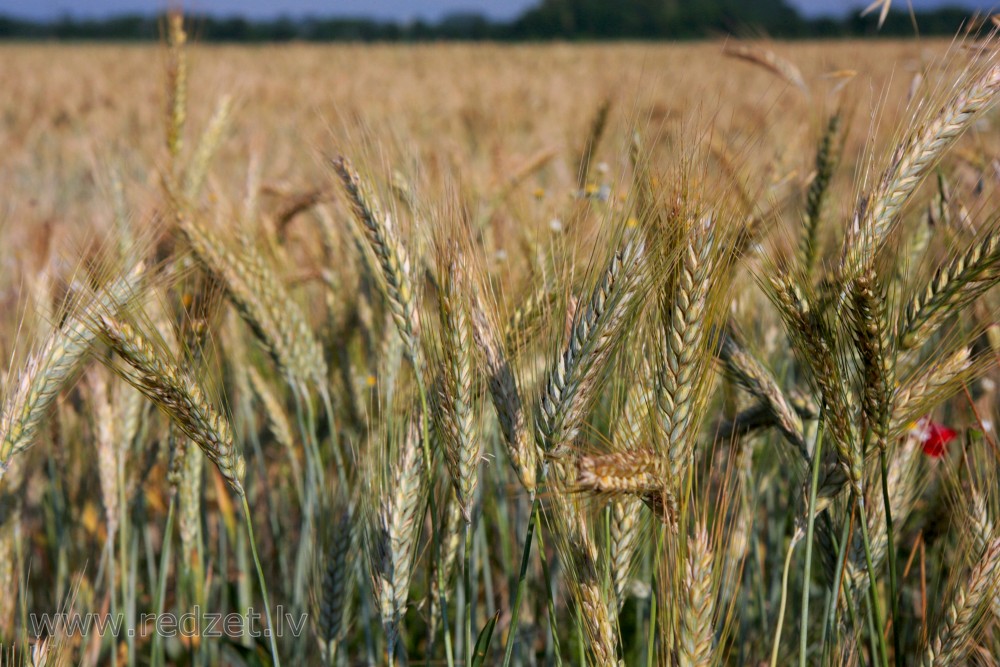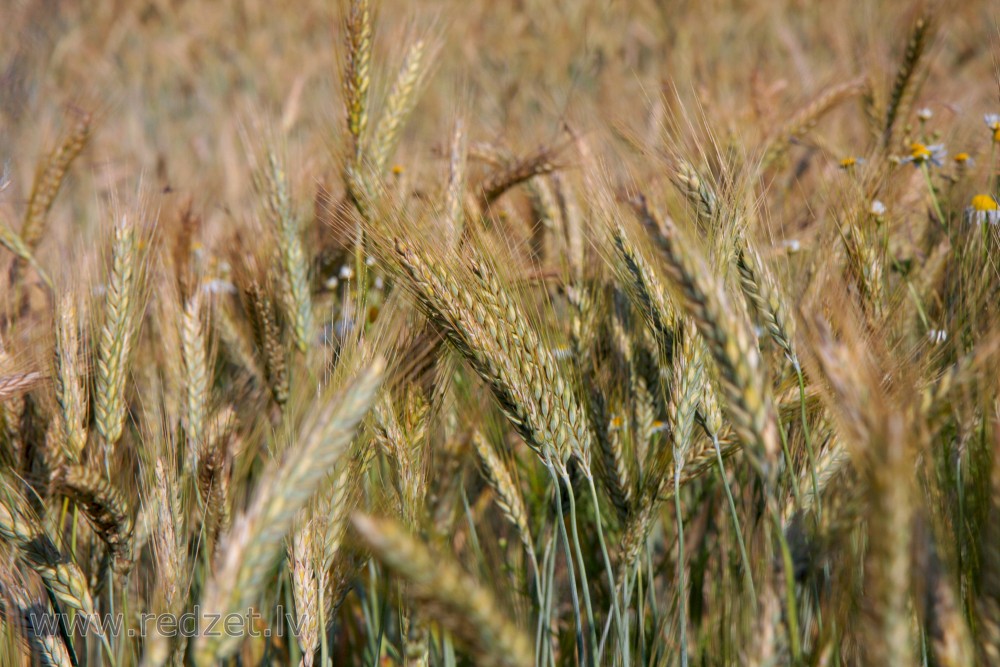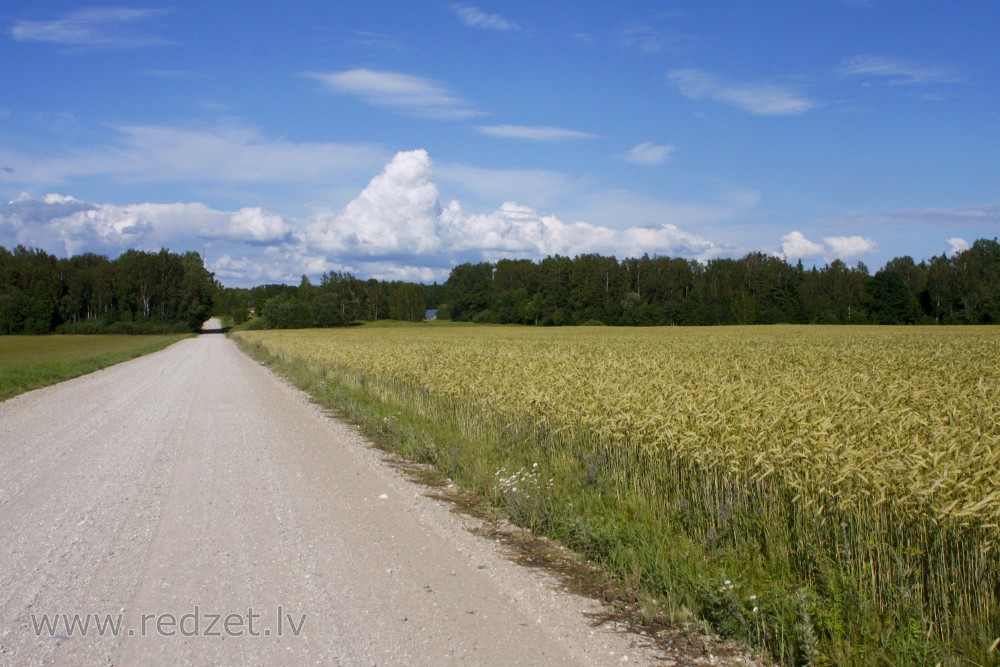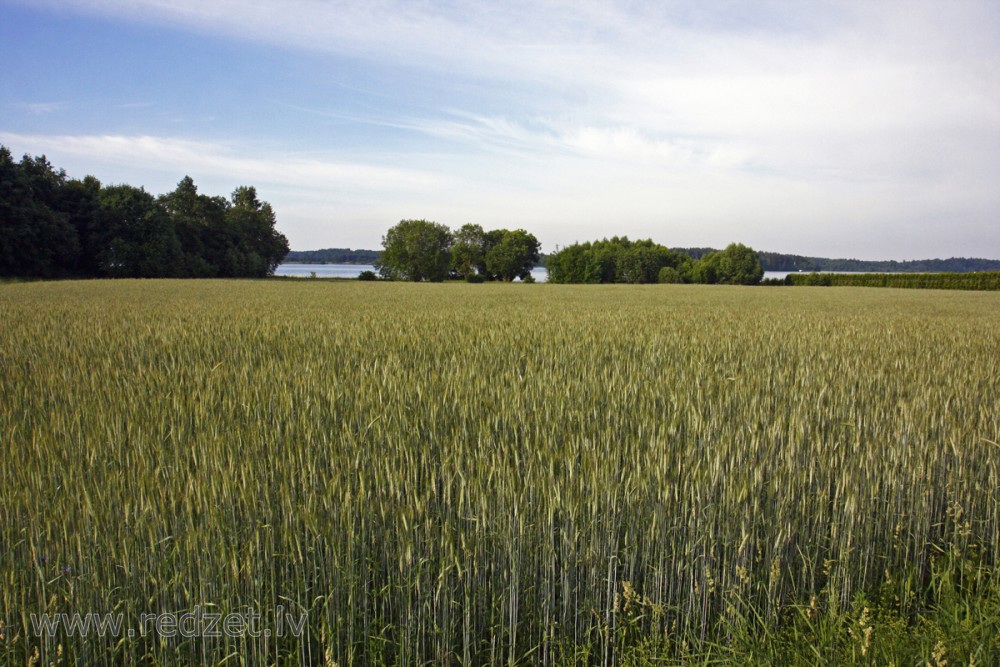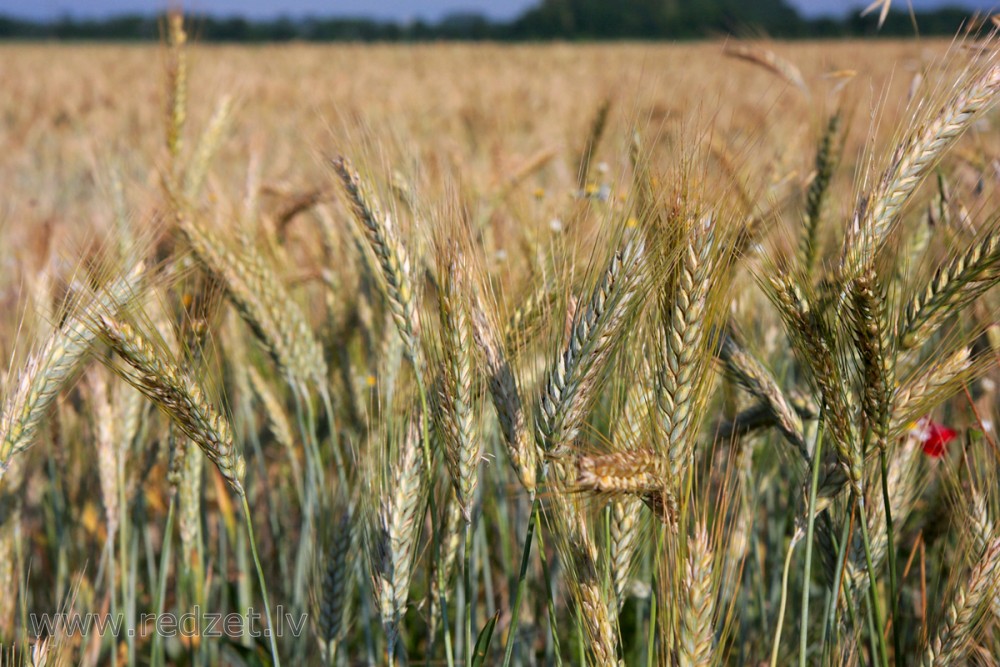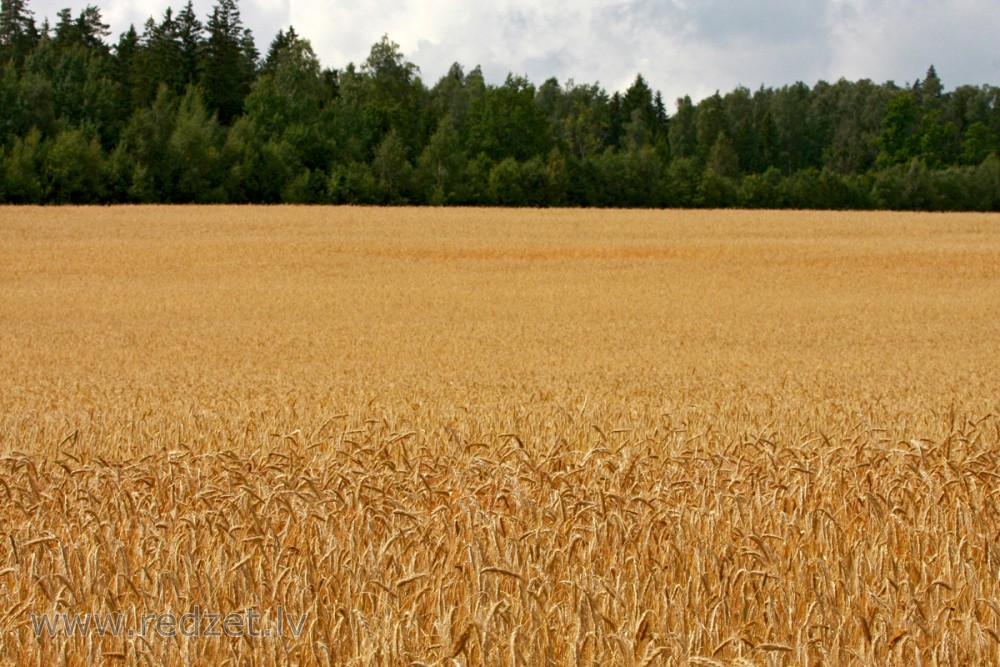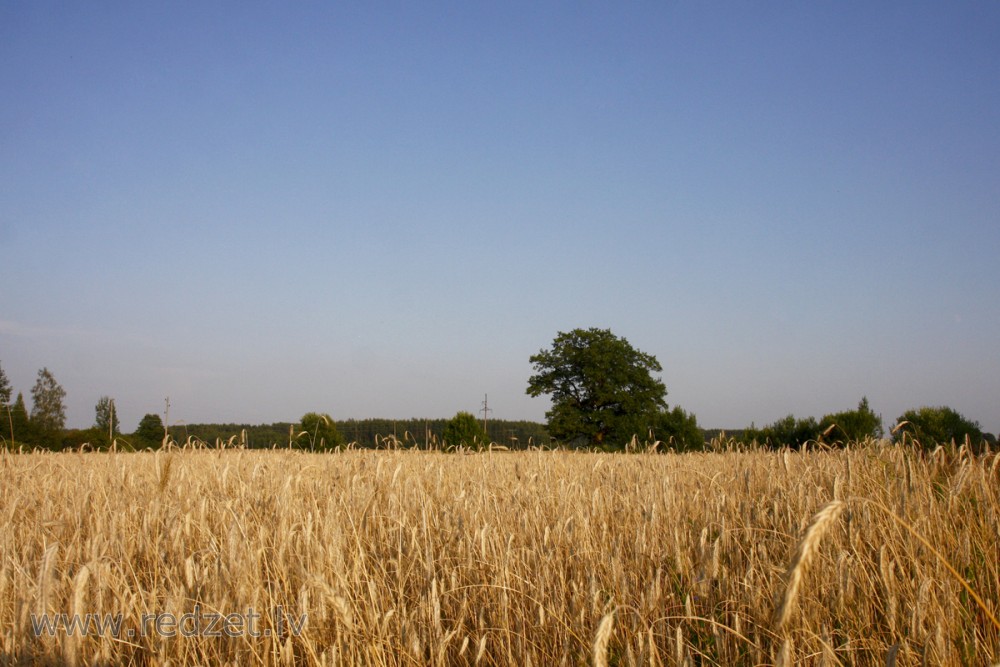Rye (Secale cereale)
Rye (Secale cereale) is a grass grown extensively as a grain, a cover crop and a forage crop. It is a member of the wheat tribe (Triticeae) and is closely related to barley (genus Hordeum) and wheat (Triticum). Rye grain is used for flour, bread, beer, crisp bread, some whiskeys, some vodkas, and animal fodder. It can also be eaten whole, either as boiled rye berries or by being rolled, similar to rolled oats.
Rye is a cereal grain and should not be confused with ryegrass, which is used for lawns, pasture, and hay for livestock.
| Rye | |
| Kingdom: | Plantae |
| Clade: | Tracheophytes |
| Clade: | Angiosperms |
| Clade: | Monocots |
| Clade: | Commelinids |
| Order: | Poales |
| Family: | Poaceae |
| Genus: | Secale |
| Species: | S. cereale |
History
Rye is one of a number of species that grow wild in central and eastern Turkey and in adjacent areas. Domesticated rye occurs in small quantities at a number of Neolithic sites in (Asia Minor) Turkey, such as the Pre-Pottery Neolithic B Can Hasan III near Çatalhöyük, but is otherwise absent from the archaeological record until the Bronze Age of central Europe, c. 1800–1500 BCE. It is possible that rye traveled west from (Asia Minor) Turkey as a minor admixture in wheat (possibly as a result of Vavilovian mimicry), and was only later cultivated in its own right. Although archeological evidence of this grain has been found in Roman contexts along the Rhine, Danube, and in Ireland and Britain, Pliny the Elder was dismissive of rye, writing that it "is a very poor food and only serves to avert starvation" and spelt is mixed into it "to mitigate its bitter taste, and even then is most unpleasant to the stomach".
Since the Middle Ages people have cultivated rye widely in Central and Eastern Europe. It serves as the main bread cereal in most areas east of the French-German border and north of Hungary. In Southern Europe, it was cultivated on marginal lands.
Claims of much earlier cultivation of rye, at the Epipalaeolithic site of Tell Abu Hureyra in the Euphrates valley of northern Syria remain controversial. Critics point to inconsistencies in the radiocarbon dates, and identifications based solely on grain, rather than on chaff.
Agronomy
Winter rye is any breed of rye planted in the fall to provide ground cover for the winter. It grows during warmer days of the winter when sunlight temporarily warms the plant above freezing, even while there is general snow cover. It can be used to prevent the growth of winter-hardy weeds, and can either be harvested as a bonus crop or tilled directly into the ground in spring to provide more organic matter for the next summer's crop. It is sometimes used in winter gardens and is a common nurse crop.
The nematode Ditylenchus dipsaci, leaf beetle, fruit fly, gout fly, cereal chafer, dart moth, cereal bug, Hessian fly, and rustic shoulder knot are among insects which can seriously affect rye health.
Production and consumption statistics
Rye is grown primarily in Eastern, Central and Northern Europe. The main rye belt stretches from northern Germany through Poland, Ukraine, Belarus, Lithuania and Latvia into central and northern Russia. Rye is also grown in North America (Canada and the United States), in South America (Argentina, Brazil and Chile), in Oceania (Australia and New Zealand), in Turkey, in Kazakhstan and in northern China.
Production levels of rye have fallen in most of the producing nations, as of 2012. For instance, production of rye in Russia fell from 13.9 million metric tons (t) in 1992 to 2.1 t in 2012. Corresponding figures for other countries are as follows: Poland – falling from 5.9 t in 1992 to 2.9 t in 2005; Germany – 3.3 t to 3.9 Mt; Belarus – 3.1 t to 1.1 t; China – 1.7 t to 0.7 t. Most rye is consumed locally or exported only to neighboring countries, rather than being shipped worldwide.
World trade of rye is low compared with other grains such as wheat. The total export of rye for 2016 was $186M compared with $30.1B for wheat.
Poland consumes the most rye per person at 32.4 kg/capita (2009). Nordic and Baltic countries are also very high. The EU in general is around 5.6 kg/capita. The entire world only consumes 0.9 kg/capita.
Diseases
Rye is highly susceptible to the ergot fungus. Consumption of ergot-infected rye by humans and animals results in a serious medical condition known as ergotism. Ergotism can cause both physical and mental harm, including convulsions, miscarriage, necrosis of digits, hallucinations and death. Historically, damp northern countries that have depended on rye as a staple crop were subject to periodic epidemics of this condition. Such epidemics have been found to correlate with periods of frequent witch trials, such as the Salem witch trials in Massachusetts in 1692. Modern grain-cleaning and milling methods have practically eliminated the disease, but contaminated flour may end up in bread and other food products if the ergot is not removed before milling.
Uses
Rye grain is refined into a flour. Rye flour is high in gliadin but low in glutenin. It therefore has a lower gluten content than wheat flour. It also contains a higher proportion of soluble fiber. Alkylresorcinols are phenolic lipids present in high amounts in the bran layer (e.g. pericarp, testa and aleurone layers) of wheat and rye (0.1–0.3% of dry weight). Rye bread, including pumpernickel, is made using rye flour and is a widely eaten food in Northern and Eastern Europe. Rye is also used to make crisp bread.
Rye grain is used to make alcoholic drinks, like rye whiskey and rye beer. Other uses of rye grain include kvass and an herbal medicine known as rye extract. Rye straw is used as livestock bedding, as a cover crop and green manure for soil amendment, and to make crafts such as corn dollies.
Physical characteristics
Physical properties of rye affect attributes of the final food product such as seed size and surface area, and porosity. The surface area of the seed directly correlates to the drying and heat transfer time. Smaller seeds have increased heat transfer, which leads to lower drying time. Seeds with lower amounts of porosity also have lower tendencies to lose water during the process of drying.
Cultivation
Rye grows well in much poorer soils than those necessary for most cereal grains. Thus, it is an especially valuable crop in regions where the soil has sand or peat. Rye plants withstand cold better than other small grains do. Rye will survive with snow cover that would otherwise result in winter-kill for winter wheat. Most farmers grow winter ryes, which are planted and begin to grow in autumn. In spring, the plants develop and produce their crop.
Fall-planted rye shows fast growth. By the summer solstice, plants reach their maximum height of about a 120 cm (4 ft) while spring-planted wheat has only recently germinated. Vigorous growth suppresses even the most noxious weed competitors and rye can be grown without application of herbicides.
Rye is a common, unwanted invader of winter wheat fields. If allowed to grow and mature, it may cause substantially reduced prices (docking) for harvested wheat.
en.wikipedia.org
